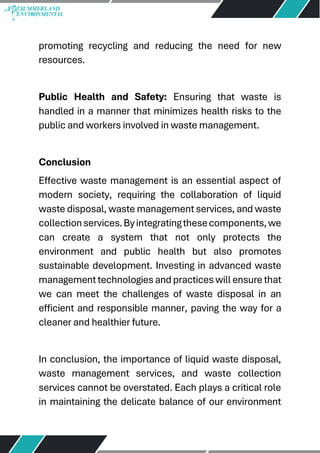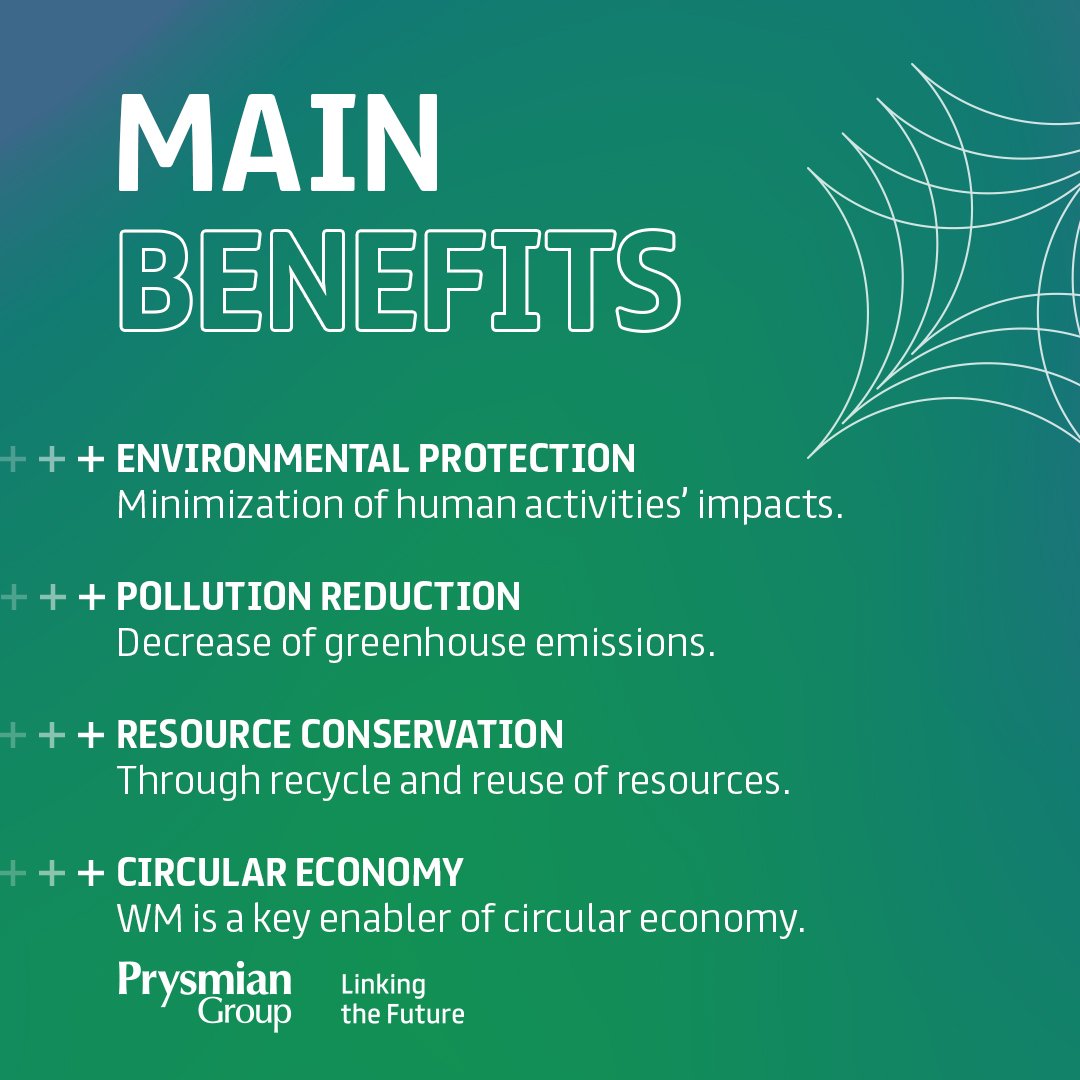Some Known Questions About Reclaim Waste.
Table of ContentsThe 3-Minute Rule for Reclaim WasteThe Of Reclaim WasteExamine This Report about Reclaim WasteReclaim Waste for BeginnersThe 8-Second Trick For Reclaim Waste
Discover the kinds, occurrences, and kinds of fluid waste. Domestic sewage waste describes the waste and items from a household sewage-disposal tank. This kind of waste is produced by human beings in homes, schools, and various other buildings. This only consists of sewage-disposal tanks that have a drain area. The appropriate administration and disposal of residential sewage waste require liquid waste to be moved to a sewer treatment plant where the appropriate techniques and tools are put on purify and get rid of waste.
Industrial waste typically consists of potential threats, such as flammable products or a mixture of liquid and solid waste products, and needs a more innovative and comprehensive disposal procedure. The disposal of commercial waste typically includes the purification of waste before transport to make certain risk-free and correct disposal. Hazardous waste is developed from byproducts and runoff of industrial procedures and manufacturing.
This kind of waste can not utilize the very same sewage administration transportation or procedures as septic or commercial liquids. The hazardous waste administration procedure calls for the inspection and testing of liquid waste before it goes through the disposal process (liquid waste disposal). Drainage waste is the liquid waste that comes from runoff and excess stormwater in highly booming locations or cities
Drainage waste can cause contamination and flooding if not taken care of properly. Ensuring correct waste monitoring can protect against catastrophes and decrease environmental injury.
The 9-Second Trick For Reclaim Waste
Call PROS Solutions today to discover our waste management and disposal solutions and the proper methods to take care of the fluid waste you produce.
(https://www.twitch.tv/reclaimwaste1/about)Do you recognize what takes place to your water when you disengage, purge the bathroom or drain pipes the cleaning machine? No? Well, it deserves understanding. This so-called 'wastewater' is not just a vital resource however, after therapy, will certainly be launched to our land, rivers or the ocean. Utilized water from bathrooms, showers, baths, cooking area sinks, washings and industrial procedures is referred to as wastewater.

water utilized to cool down machinery or tidy plant and tools). Stormwater, a type of wastewater, is drainage that moves from agricultural and urban locations such as roofs, parks, yards, roads, courses and rain gutters right into stormwater drains, after rainfall. Stormwater moves unattended straight to neighborhood creeks or rivers, eventually getting to the sea.
The Buzz on Reclaim Waste
In Queensland, a lot of wastewater is dealt with at sewage therapy plants. Wastewater is carried from domestic or commercial websites through a system of sewers and pump terminals, known as sewerage reticulation, to a sewer treatment plant.
The Department of Natural Resources suggests city governments regarding managing, operating and maintaining sewage systems and therapy plants. In unsewered areas, neighborhood governments might call for householders to install private or household sewage therapy systems to treat domestic wastewater from bathrooms, kitchen areas, bathrooms and laundries. The Department of Natural Resources authorises making use of family systems when they are confirmed to be reliable.
A lot of stormwater receives no treatment. In some new subdivisions, treatment of some stormwater to eliminate litter, sand and crushed rock has actually begun making use of gross contaminant traps. Wastewater therapy takes place in four stages: Removes solid matter. Bigger solids, such as plastics and other items mistakenly discharged to drains, are gotten rid of when wastewater is gone through displays.
Utilizes small living microorganisms recognizes as micro-organisms to damage down and get rid of staying dissolved wastes and fine particles. Micro-organisms and wastes are included in the sludge.
The Definitive Guide for Reclaim Waste
Nutrient elimination is not available at all sewer treatment plants due to the fact that it needs expensive specialized devices. It is ending up being a lot more usual in Queensland. Clear liquid effluent created after treatment might still include disease-causing micro-organisms. If this effluent is released into rivers such as rivers or the sea, the micro-organisms will at some point pass away out.

Most wastewater moves into the sewerage system. Under the Act, regional governments provide authorizations and licences for eco appropriate tasks (Periods) including wastewater launches that may have a local influence.
Reclaim Waste Fundamentals Explained
Otherwise, samples are taken for laboratory analysis. Often numerous tests are required original site to establish the levels of each of the different pollutants such as oils, heavy steels and chemicals in water. Surveillance offers accurate info regarding water top quality and can confirm that licence conditions are being satisfied. The details gotten through surveillance offers the basis for making water high quality decisions.